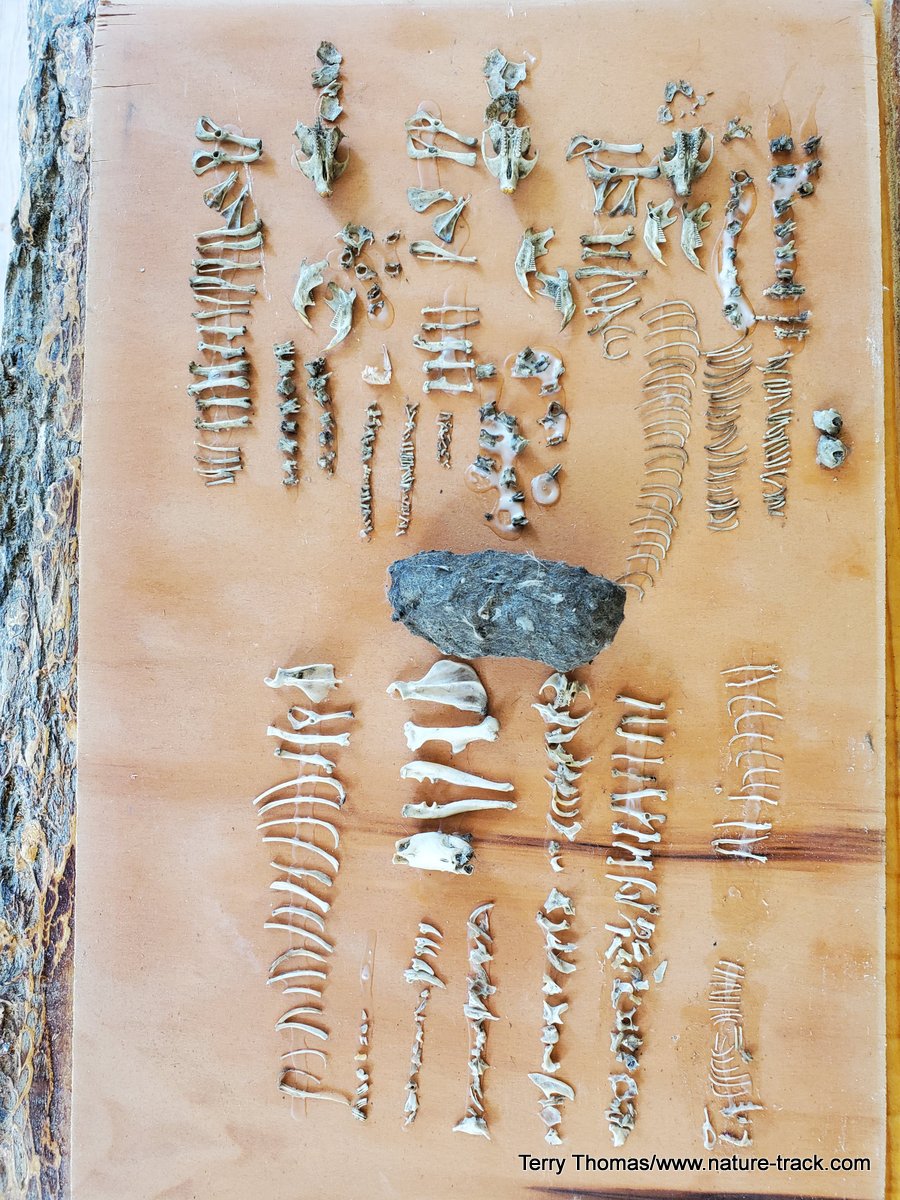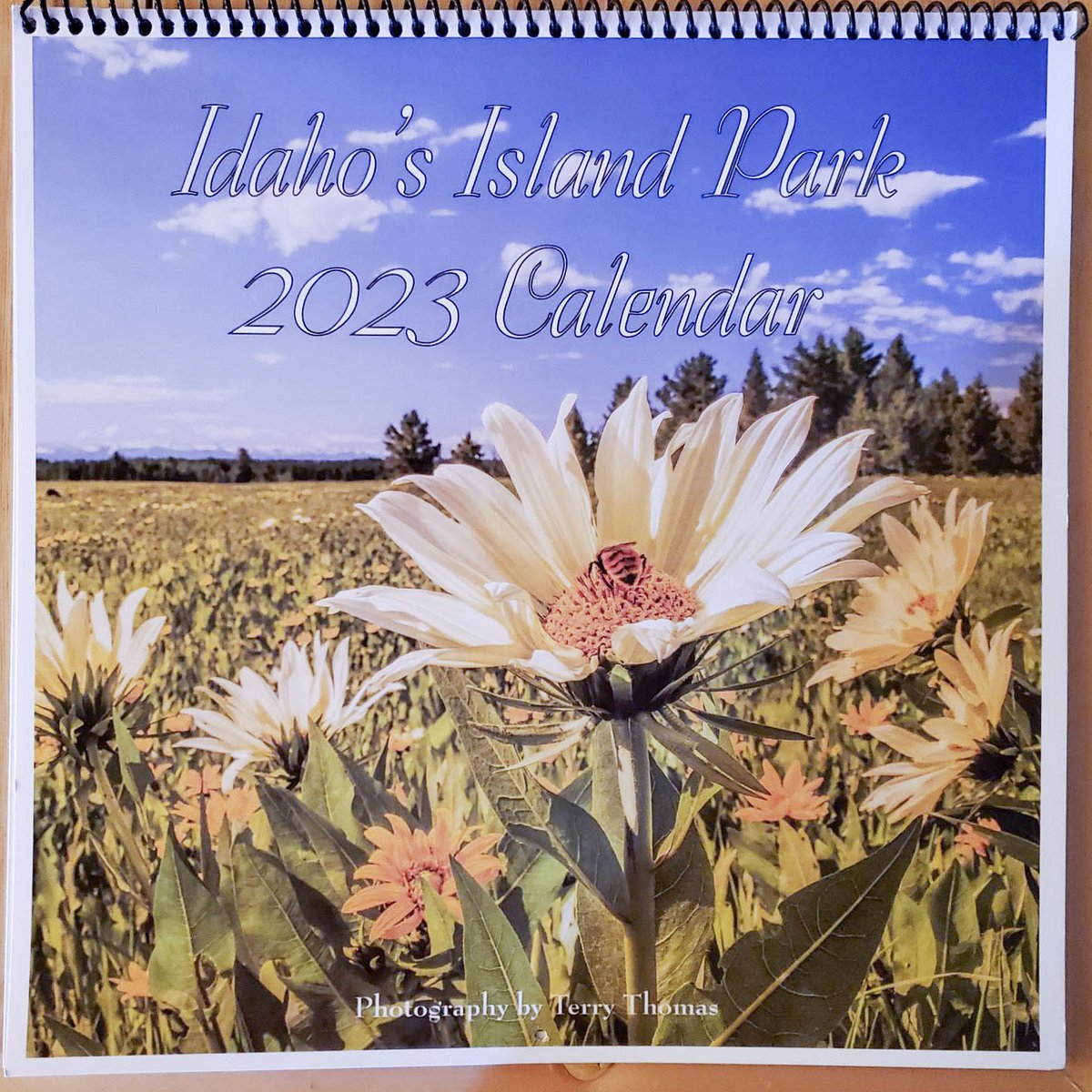Simple Things

Bone contents of two owl pellets with a single unopened pellet between them. Dissecting owl pellets isn’t for everyone, but getting a first hand look at the circle of life and trying to piece together the story it tells makes it worth it.
As I carefully removed material, the block of redwood in my hand was slowly taking shape as a coyote foot. When I was satisfied that I had a realistic facsimile of a piece of coyote anatomy, I moved on to carving a deer hoof. I had anticipated this to be the easier of the two, but it was challenging as well. These were going to make a lot of impressions in sand for kids to practice making plaster track casts and I wanted them to be at least reasonably accurate.
I moved inside and began phase two of my preparation for a wildlife festival held last week in Island Park. I grabbed my bag of sanitized owl pellets (for instructions on how to sanitize owl pellets, go to: https://www.nature-track.com/Howtosanitizeowlpellets.html) and selected a couple for dissection. It has been a long time since I have poked around in an owl pellet and I was sort of looking forward to it. In case you don’t know, an owl pellet is a regurgitated pellet (not feces) comprised of indigestible fur and bones of prey animals.
The first pellet held a surprising array of bones. There were bits of skulls, but no intact ones and only two jaws with recognizable tooth patterns. Nonetheless, I could recognize that there were bones from at least five different species. The tiniest bone set belonged to a shrew, the tooth pattern in the miniscule lower jaw made that clear once I looked at it with a ten power handlens. The largest set of bones was likely that of a pocket gopher. A set of four sharp claws had me puzzled for a while, then I figured that they must belong to the pocket gopher.
The second pellet was interesting as well. There were three intact upper jaws with partial skulls, two belonging to mountain voles and the other was undetermined. It was interesting that all three skulls were at one end of the pellet and the larger bones of the legs were in the opposite end. Vertebra, ribs and phalanges were scattered throughout the mass of gray fur. Each time I found a phalange (finger/toe bone) I marveled at the minute size. Some were not much bigger than a grain of salt. I am sure that I left a number of them in the fur. Bits and pieces of a tiny skull were evidence that a shrew had been part of the midnight snack several nights previous.
As my hands worked to separate bone from fur, my mind was free to wander. I thought about the drama that had happened that night when these rodents became the sustenance for another creature. I thought about the hunter and how the taking of these lives was as normal as waking up. It amazes me that this can go on every day, every night, with coyotes, raptors, snakes, cats, herons, frogs, fish and a basket full of other predators filling their bellies with other critters and they never run out. It left me wondering, who is really in charge, the predator that kills the animal or the animal that feeds and sustains the predator? And, I thought about just how finely tuned this process must be and how easy it is for man to intervene and really mess things up.
Some people, no, likely most people, would find dissection of an owl pellet repugnant. I get that there isn’t much scientific about it, but somehow, this simple thing, seeing firsthand the circle of life in a very real way, is certainly soul satisfying and re-sparks the curiosity that I sometimes worry has left the building.
Help Idaho Wildlife
When we traveled across the state in October 2017, most of the vehicles we saw using the wildlife management areas did not have wildlife plates. Buying wildlife plates is a great way for non-hunters and hunters alike to support wildlife-based recreation like birding.
C'mon folks, let's help Idaho's wildlife by proudly buying and displaying a wildlife license plate on each of our vehicles!
See below for information on Idaho plates. Most states have wildlife plates so if you live outside Idaho, check with your state's wildlife department or vehicle licensing division for availability of state wildlife plates where you live.
And tell them that you heard about it from Nature-track.com!

Wildlife License Plates
Great news! as of 2024, there are three NEW designs for license plates. They still are bluebird, cutthroat trout and elk, but they are beautiful.
Idaho Wildlife license plates provide essential funding that benefits the great diversity of native plants and wildlife that are not hunted, fished or trapped—over 10,000 species or 98% of Idaho’s species diversity. Game species that share the same habitats (such as elk, deer, antelope, sage-grouse, salmon, trout) also benefit from these specialty plates.
No state tax dollars are provided for wildlife diversity, conservation education and recreation programs. Neither are any revenues from the sale of hunting or fishing licenses spent on nongame species. Instead, these species depend on direct donations, federal grants, fundraising initiatives—and the Idaho Wildlife license plates.
Both my vehicles have Bluebird Plates. I prefer the bluebird because the nongame program gets 70 percent of the money from bluebird plates, but only 60 percent of the money from elk and trout plates - 10 percent of the money from elk plates supports wildlife disease monitoring and testing programs (to benefit the livestock industry) and 10 percent from cutthroat plates supports non-motorized boat access.
Incidentally, in 2014, the Idaho Legislature denied the Department of Fish and Game the ability to add new plates or even to change the name of the elk and cutthroat plates (very specific) to wildlife and fish plates, a move that would have allowed for changing images occasionally and generating more revenue. It would seem that they believe that we Idahoans don't want a well funded wildlife program.
I think it is time we let the Legislature know that Idahoan support wildlife funding and that we would like to see these generic plates come to fruition.

The 2023 Island Park Calendar is one of a kind. Almost 12 inches square, printed on extra heavy stock and with a spiral binder that allows the calendar to lay flat against a wall, it is a keepsake with photos worthy of framing. I know as I just heard that one of them was framed and used as a retirement gift for a federal employee. If you, or someone you know has ties to Island Park, this is the perfect gift. Order one today by using the Contact Us page. We can accept Venmo.

"WOW. What a phenomenal piece you wrote. You are amazing." Jennifer Jackson
That is embarrassing, but actually a fairly typical response to my nature essays. Since The Best of Nature is created from the very best of 16 years of these nature essays published weekly in the Idaho Falls Post Register (online readership 70,000), it is a fine read. It covers a wide variety of topics including humorous glimpses of nature, philosophy, natural history, and conservation. Readers praise the style, breadth of subject matter and my ability to communicate complex and emotional topics in a relaxed and understandable manner.
Everyone can find something to love in this book. From teenagers to octogenarians, from the coffee shop to the school room, these nature essays are widely read and enjoyed.
Some of the essays here are my personal favorites, others seemed to strike a chord with readers. Most have an important message or lesson that will resonate with you. They are written with a goal to simultaneously entertain and educate about the wonderful workings of nature. Some will make you laugh out loud and others will bring a tear to the eye and warm your heart.
Readers Write:
"You hit a home run with your article on, Big Questions in Nature. It should be required reading for everyone who has lost touch with nature...great job!" Joe Chapman
"We enjoyed your column, Bloom Where Planted. Some of the best writing yet. The Post Register is fortunate to have your weekly columns." Lou Griffin.
To read more and to order a copy, click here or get the Kindle version
Copies are also available at:
Post Register
Island Park Builders Supply (upstairs)
Barnes and Noble in Idaho Falls
Harriman State Park, Island Park
Museum of Idaho
Valley Books, Jackson Wyoming
Avocet Corner Bookstore, Bear River National Wildlife Refuge, Brigham City, Utah
Craters of the Moon National Monument Bookstore, Arco, Idaho